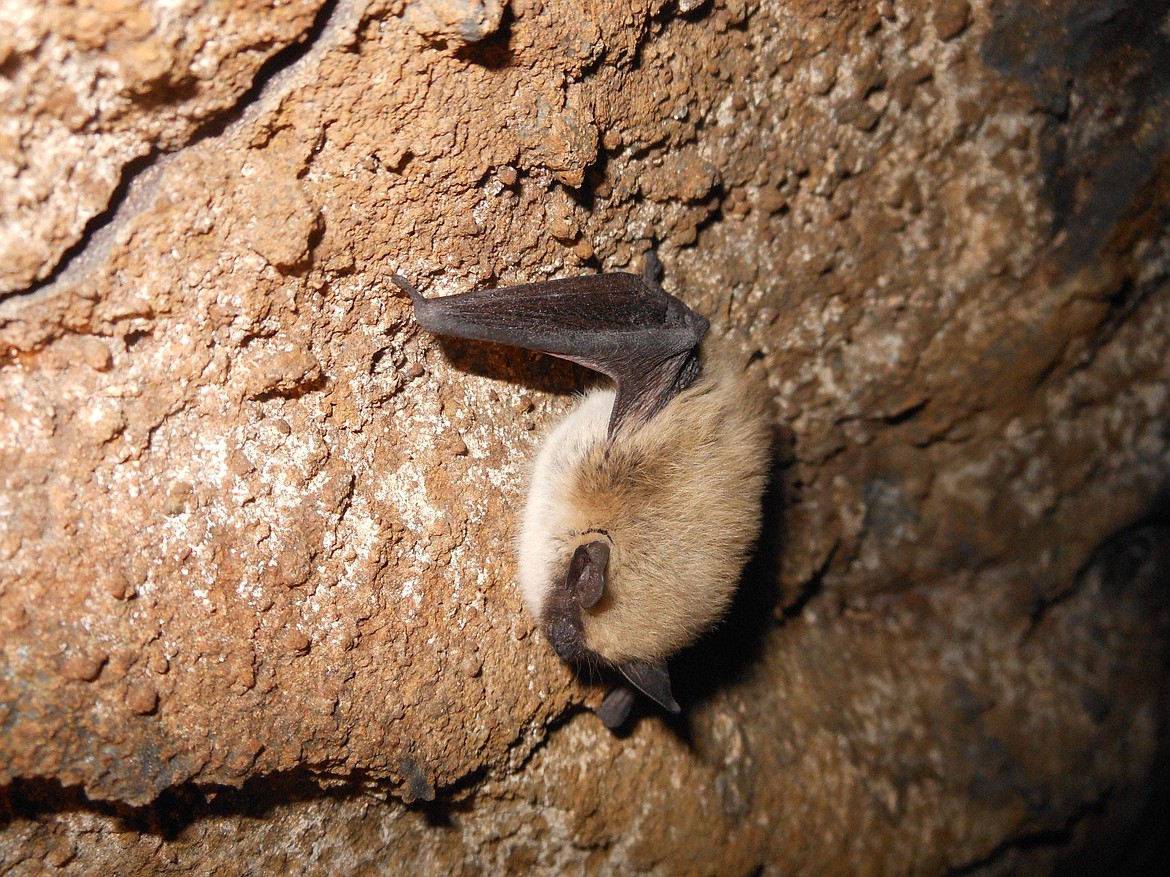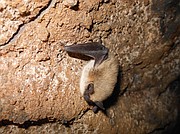What’s so scary about bats?
Not all that goes bump in the night is ghoulish or fearsome.
When it comes to a bat who found its way into the attic, there’s a lot more to love than fear, at least Dr. Rita Dixon hopes you’ll think so.
“In some cultures bats are revered and really valued, but unfortunately we still have this perception by a lot of people that bats are scary,” said Dixon. Much of her job as State Wildlife Action Plan Coordinator for Idaho Fish and Game focuses on our winged friends with a bad reputation – bats – who are a protected species..
Dixon is passionate about correcting misconceptions about bats and recently helped produce a bat awareness and safety film for IDFG, called “Protect People, Protect Bats.”
“People are so scared of bats, but bats are such gentle animals.”- Dr. Rita Dixon
While historical and pop culture references have a lot to do with this negative perception, many pictures of bats out there show the critters in less-than-innocent poses, often with teeth bared.
“Most of the time that is not what bats look like, and so that’s part of the problem.”
Bats, Dixon says, have “the cutest little” faces [see accompanying photos to draw your own conclusion] as well as several habits likely to endear the mammals to those who know them better.
Her work promotes the safety of bats as much as human safety from bats.
When people see a bat, many assume it has rabies and call Fish and Game. They may also mess with a bat they find anywhere they don’t expect to see them.
“One of the most important messages to get out is if you see a bat, leave it alone. It’s probably just sleeping.”
Not all bats sleep in caves. Bats may choose to wedge themselves into cracks, hang from trees, and some may try to rest, or roost, close to the ground.
This time of year, some of Idaho’s 14 bat species are still migrating. Bats can fly up to 50 miles in a night and, as many Idaho bats fly as far as 900 miles to Arizona and Southern California, they can be quite tired. Young bats, born in the summer, may be especially poor judges of where to sleep.
“We always try to encourage people especially during migration… If you find a bat and it's asleep you really need to leave it alone,” said Dixon.
“Most of the time people create problems that weren't there until they intervened and decided to mess with the bat.”
Not only do these creatures (who are unrelated to the rodent family, contrary to popular belief) need rest for migration or - for those who will hibernate - to prepare for winter, it can also be hazardous to disturb bats.
“Most of the people who call me, they’re not used to seeing bats. So one of the first things out of their mouth is, “I found a bat. I’m sure it has rabies.’” But that isn’t likely, she says.
“Less than one percent of bats ever get rabies.”- Dr. Rita Dixon
She also emphasized that bats don’t carry rabies without suffering themselves. They can’t ‘carry’ it indefinitely, infecting others. When a bat contracts the virus it gets sick, dies, and is taken out of the population – unlikely to run into you or I.
The nature of rabies in bats is also less cause for fear.
“Rabies in bats is generally what we call passive or ‘dumb’ rabies, where they just get lethargic and die. Very, very rarely does a bat get what we call ‘furious’ rabies.”
That’s not to say you should take any risks. Rabies is still dangerous when contracted by humans and is taken seriously by Fish and Game.
But if one finds its way indoors, Dixon says to simply put on gloves, try to get it in a cardboard box, and let it outside.
The risks could prove worse for the bat than they are you.
“If [humans] get bit, the bat has to be euthanized and tested for rabies.
“We lose a lot of bats every year because people don’t know what to do.”
Another way bats may be at risk? COVID-19.
Although bats were definitely not the source of the virus SARS-CoV-2, which causes COVID-19, says Dixon,ironically, bats could be at risk of contracting the disease from us.
“We don’t know that right now. It's mostly assumptions that it could happen … but we're taking precautions.” Dixon even suggests wearing a mask to protect a bat if you need to gently herd it out of the house.
Other threats to Idaho bats include white-nose syndrome, a fungal disease which Sara Straub, U.S. Fish and Wildlife Service biologist and Manager of the Kootenai Wildlife Refuge in Bonners Ferry. says is killing bats across the continent at alarming numbers.
Thanks to partnership with Friends of Kootenai National Wildlife Refuge, each summer a bat colony survey is conducted as the bats leave their homes at sunset to feed on insects. Straub said this work suggests 500 to 1,000 bats use the refuge’s bat boxes to raise young each year.
Cats are another threat, which is ironic, because the two creatures have a lot in common.
“It’s a good idea to keep them inside if [you] can, because cats are major bat-killers,” said Dixon.
Felines likely won’t catch bats out of the air, but a resting bat, particularly any young bats in the fall who choose to “roost” and sleep too low to the ground, is an easy target.
Guess nobody told Fluffy about bats’ protected status.
Bats and cats share a couple of key similarities, however.
Contrary to their dirty reputation, bats are fastidious groomers.
“Oh my gosh, they are immaculately clean. They groom themselves just like cats,” said Dixon.
Hanging by the toenails of one foot, bats use their free foot to comb their fur, lick it clean, then switch sides. They’ll groom their pups, too.
“They’re really good mothers,” Dixon said. “It’s just as cute as can be.”
Bats even purr like cats.
Just in case you aren’t convinced of bats’ friendly status, however, Dixon reminds that bats are legally protected in Idaho, so don’t try to harm, harass, or kill them.
“We just want to make sure we're protecting our bats and we're protecting people.”
BATS 101
In honor of National Bat Week, which started last Saturday and ends today, here’s some clarification on our friends of the night:
1. Bats aren’t vampires. First things first, they’re not interested in you or your blood. Unless you’re a big, juicy moth. Although there are fruit bats and vampire bats, the Gem State’s species all eat insects.
“There was a study that basically estimated the economic value of bats in the U.S. … And it turned out that bats are worth over 313 million dollars to the state of Idaho just for agriculture, and that doesn’t even take into consideration the value to the forest industry because they eat forest insect pests that damage our forests,” said Sara Straub, U.S. Fish and Wildlife Service biologist and Manager of the Kootenai Wildlife Refuge in Bonners Ferry.
2. Bat diets are beneficial. They also eat mosquitos and other insects which carry disease.
“They are incredibly efficient pest controllers, catching thousands of mosquitos each summer evening on the Refuge!” said Straub.
3. Idaho has 14 bat species. Found all over the state, Idaho bats include a variety of colors and shapes. Common on Kootenai Wildlife Refuge are the Little brown bat (Myotis lucifugus), Yuma brown bat (Myotis yumanensis), Long-eared brown bat (Myotis evotix), California brown bat (Myotis californicus), Silver-haired bat (Lasionycteris noctivagans), Big brown bat (Eptesicus fuscus), Hoary bat (Lasiurus cinereus), and Townsend's big-eared bat (Corynorhinus townsendii).
And while bats come in different sizes, don’t expect any six-foot wingspans straight out of a horror movie.
4. They’re tiny. Those who try to call IDFG to report a bat often think they’ve found a baby, but really Idaho’s species are quite small.
“Our biggest bat would fit in an envelope and it wouldn't weigh more than a first-class stamp,” said Dixon.
5. No need to panic. Bats may find apartment stairwells, eaves, old buildings, and attics appealing, but Dixon assures they won’t be chewing through your walls. Their teeth aren’t strong enough. Nor are they likely to spread disease harmful to humans. If you can’t gently shoo it away, call Fish and Game at (208) 769-1414.

















